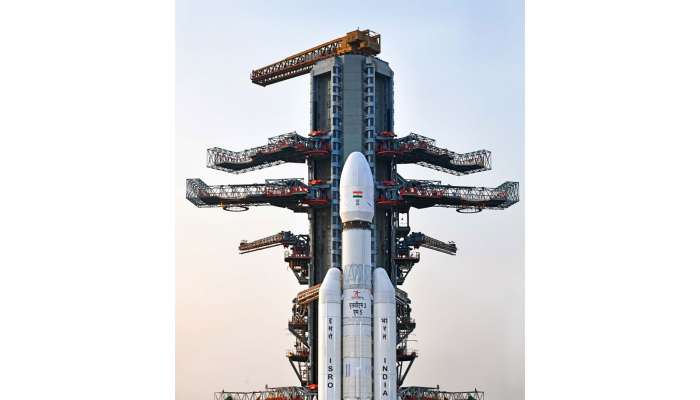
New Delhi: India’s space programme has continued to make remarkable progress over the years, achieving a series of impressive satellite launches, with the most recent being a 4,400-kg communication satellite, one of its heaviest ever. India is firmly in the elite club of spacefaring nations by achieving advanced, independent capabilities in designing, launching, and operating complex space missions. India entered the space age in 1975 with the launch of the first satellite, Aryabhata-- developed using indigenous technology.
Since then, the country has made longer strides, with a focus on self-reliance, by developing different kinds of satellites. The Indian Space Research Organisation (ISRO), the country’s premier space exploration agency, has proved its mettle with the completion of technically intricate and formidable missions, such as lunar mission Chandrayaan-3, Mars mission Mangalyaan, solar observatory mission Aditya-L1, among others. India is the first nation to land on the Moon’s south pole.
India builds and launches its own rockets — from Polar Satellite Launch Vehicle (PSLV), Geosynchronous Satellite Launch Vehicle (GSLV), Geosynchronous Satellite Launch Vehicle Mk-III (LVM3). Moreover, ISRO is developing the Small Satellite Launch Vehicle (SSLV) that will cater to the small satellite launch market. ISRO scripted a new chapter in the global history of space exploration by launching a record 104 satellites in just one go in 2017. India has launched at least 354 foreign satellites from 34 countries onboard PSLV with capabilities to serve all categories of satellites.
In 2023, India became the first country to reach the south pole of the Moon and the fourth country to land on the planetary body. “India is now on the moon. India has reached the south pole of the moon — no other country has achieved that. We are witnessing history,” said Indian Prime Minister Narendra Modi. He attributed the success to “all of humanity”, saying “it will help moon missions by other countries in the future.”
Many applauds for the unprecedented landing of the Chandrayaan-3 on the south pole. International leaders, including the then US Vice President Kamala Harris and Russian President Vladimir Putin, Astrophysicist Neil deGrasse Tyson, IMF official Gita Gopinath, and the US National Aeronautics and Space Administration (NASA), European Space Agency (ESA), and UK Space Agency, congratulated India for the "remarkable and historic" achievement.
Australian Space Agency said “This mission will help humankind better understand our nearest celestial neighbour and make India only the fourth country to successfully land on the Moon." Interestingly, the cost of Chandrayaan-3 was just USD 75 million, much lower than the budget of Hollywood movies such as Gravity, Interstellar and The Martian. The Indian success is an inspiration to other low- and middle-income countries to get into space exploration.
Another similar low-budget space exploration event India managed to pull out was its Mars Orbiter Mission, nicknamed Mangalyaan. It cost USD 74 million, making it one of the cheapest interplanetary missions ever. Moreover, India became he first Asian nation to reach Mars orbit as well as the first to succeed in the very first attempt. Mangalyaan was supposed to work for six months as per the plan. However, it remained operational for eight years, sending thousands of crucial pictures totalling two terabytes during this time.
India excelled in its maiden solar exploration mission as well. ISRO successfully placed Aditya-L1, a scientific space observatory satellite, with seven payloads in a special halo orbit around the Lagrange Point 1 (L1), where the Sun can be observed without being blocked by Earth or the Moon. Developed at USD 46 million, Aditya-L1 showcased India’s ability to execute cost-effective yet high-value space science missions successfully. NASA called the Indian space programme’s success “scientifically important.”
Now, India is inching closer to the reality of sending its astronauts into low Earth orbit. Gaganyaan, India’s first human spaceflight mission, is scheduled for 2025-end. "Work is going on. We have planned to send the unmanned spacecraft this December-end," ISRO chief V Narayanan said. French astronaut Thomas Pesquet called the Gaganyaan mission an “extremely impressive and noticed” across the world. “I have a new dream, the dream to one day fly with an Indian astronaut colleague and take this cooperation into outer space, to bring back the unbelievable benefits of space exploration to our countries," Pesquet said.